July 2019
July 31, 2019
Your wife is hot

A controversial billboard for air conditioning recently appeared in Nottingham. It declared, "Your wife is hot." According to the BBC:
This made me wonder, which 1950s-era ad exactly was it like? Perhaps the "recipe for boiled wife" ad that we recently posted about.

Posted By: Alex - Wed Jul 31, 2019 -
Comments (3)
Category: Advertising, Gender, Billboards
Crater Critters and Kin
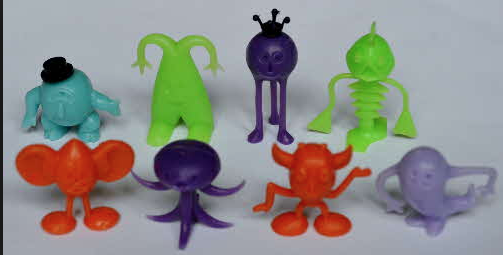
Between 1959 and 1977, an Australian company based in Melbourne called Rosenhain and Lipmann (commonly known as R&L) designed and manufactured unique and innovative toys that became hugely popular both in Australia and overseas.[1] R&L started out making snap-together items that worked like tiny plastic model kits that didn't need any glue and were issued in a clear glassine bag, inside Kellogg's cereal boxes. Between 1959 and 1977, over 70 different sets were released and it is estimated that about one billion R&L toys were delivered around the world.
Quote from Wikipedia entry.
Explore all the sets at this great site.
Posted By: Paul - Wed Jul 31, 2019 -
Comments (2)
Category: Cult Figures and Artifacts, Food, Freebies, Come-ons and Loss Leaders, Twentieth Century
July 30, 2019
The Air-Conditioning Show
In 1966, the art group Art & Language (which, at the time, was Terry Atkinson and Michael Baldwin) debuted the Air-Conditioning Show. This consisted of an air conditioner in an empty room. The only vaguely art-like part of the exhibit (in a conventional sense) was ten sheets of paper pinned to the wall by the door, on which were written line after line of cryptic sentences, such as, "It is obvious that the elements of a given framework (and this includes the constitution of construct contexts) are not at all bound to an eliminative specifying system."This exhibit is now regarded as a significant moment in the development of modern art. One art historian noted that what made it original was that, "the body of air in a particular gallery space was singled out for art-status." Another says:
In a 2012 article in the Independent, Charles Derwent singled it out as, "the moment when the visual arts in Britain were beginning to turn un-visual, when mere visuality was becoming suspect."
The sheets of paper are now preserved at the Tate Museum of Modern Art.
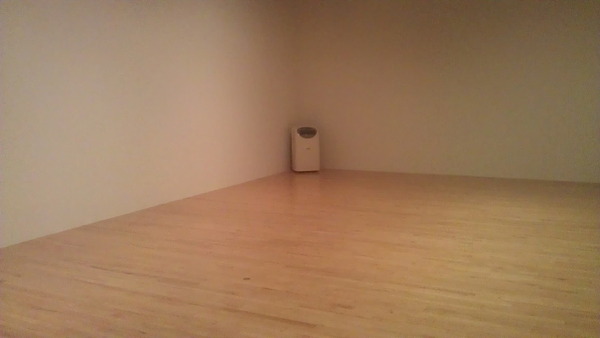

Posted By: Alex - Tue Jul 30, 2019 -
Comments (2)
Category: Art, 1960s
Silicone Face Lifter

Get yours here!
Posted By: Paul - Tue Jul 30, 2019 -
Comments (4)
Category: Beauty, Ugliness and Other Aesthetic Issues, Body Modifications, Scams, Cons, Rip-offs, and General Larceny
July 29, 2019
Obsession for Cats
The Calvin Klein fragrance Obsession for Men has the odd distinction of being known to be an aphrodisiac for cats. And not just house cats. The larger, wild variety as well. The NY Times explains:Louise Ginman, of Sydney's Taronga Zoo, further clarified to Scientific American:
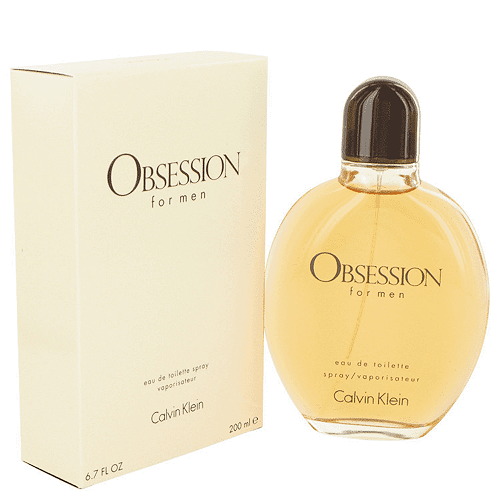
Posted By: Alex - Mon Jul 29, 2019 -
Comments (0)
Category: Cats, Sex, Perfume and Cologne and Other Scents
Unauthorized Dwellings 10
Squatting AND pirate radio! A winning combo!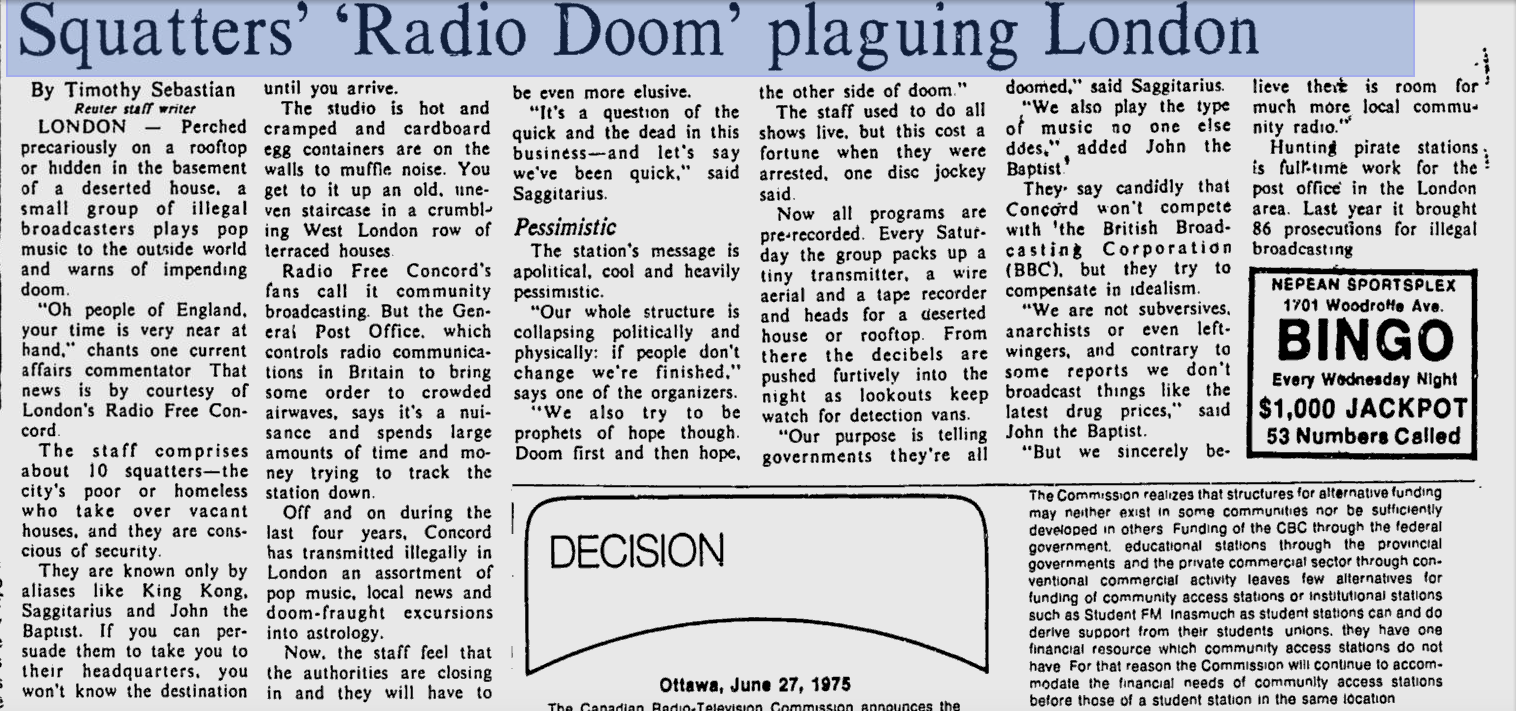
Source (where the text is bigger).
Posted By: Paul - Mon Jul 29, 2019 -
Comments (1)
Category: Radio, Unauthorized Dwellings, Bohemians, Beatniks, Hippies and Slackers, 1970s, United Kingdom
July 28, 2019
The Man Who Stole Art
The strange tale of Stéphane Breitweiser, arguably the world's greatest art thief, who managed to steal hundreds of works valued, in total, at well over one billion dollars.His success was largely attributable to a a loophole in the world of art security: that there's not much security on the front-end (in the museums). Instead, as Michael Finkel notes in a Feb 2019 article in GQ, "art crimes are typically solved on the back end, when the thieves try to sell the work."
And that's why Breitweiser managed to get away with his thefts for so long, because he never tried to sell anything. He stole because he loved the art and wanted to have it for himself, accumulating it all in his mother's house, where he lived.
His case reminds me of Joseph Feldman, who stole over 15,000 books from the New York Public Library, simply because he loved books. It suggests a recurring weird-news theme: thieves who steal not from a profit motive, but instead to indulge their obsessive collecting.

Stéphane Breitweiser
Posted By: Alex - Sun Jul 28, 2019 -
Comments (3)
Category: Art, Crime, Collectors
Follies of the Madmen #437
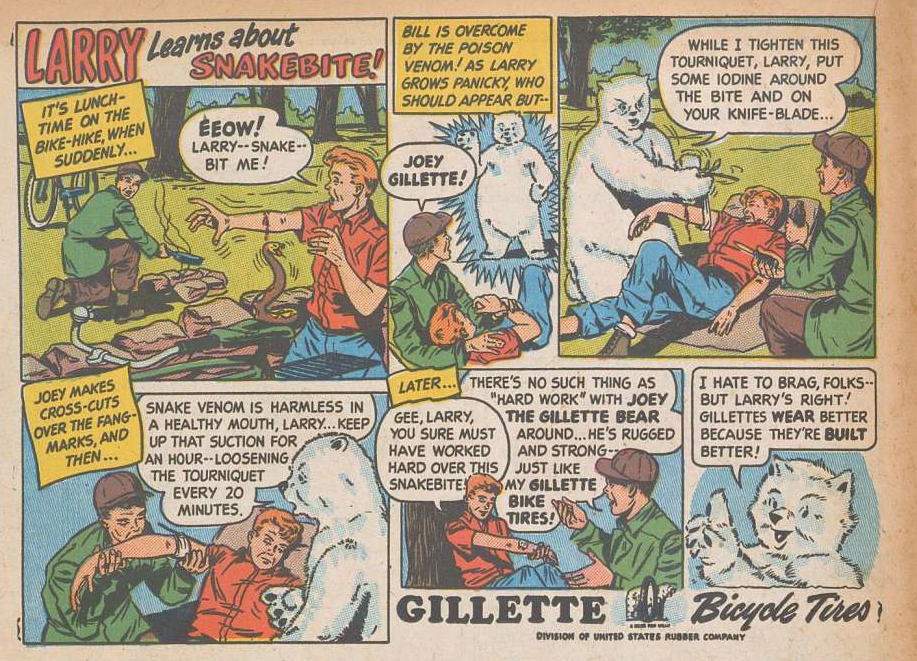
1) A bicycle tire confusingly has the same name as a razor blade company.
2) The mascot for the tire is a hyper-dimensional polar bear. These creatures apparently represent all that is desirable in a tire.
3) Even with its magic powers, the hyper-dimensional polar bear does not act to save the victim directly, but makes the human boy do all the work.
4) Moral: buy our tires to avoid snake bites?
Source (page 20).
Posted By: Paul - Sun Jul 28, 2019 -
Comments (5)
Category: Accidents, Anthropomorphism, Bicycles and Other Human-powered Vehicles, Business, Advertising, Corporate Mascots, Icons and Spokesbeings, Comics
July 27, 2019
Dessert Stomach
I’ve been saying for years that there’s always room for dessert, because dessert goes to a different part of your stomach. I feel vindicated to find out that there is some scientific basis to this claim. From the Huff Post:"A major part of the reason is a phenomenon known as sensory specific satiety. Basically, this is what we experience when we eat one food to fullness. Our senses tell us we are no longer wanting to eat any more of that specific food. In other words, we are full," Keast told The Huffington Post Australia.
"Part of the response is actually sensory boredom -- the food that excited us with promise of flavour delights is now boring. We are getting satiated, but combine this with the fact that our flavour sensing system is overloaded with the food's flavour helps us stop eating.
"Then you present a dessert, a new flavour experience, a different profile to what we are bored with. It may look and smell good and (from experience) we know sweet is appealing. No more boredom with the food and the anticipation creates appetite -- hence the dessert stomach."
In Japan, this phenomenon is called Betsubara. And some Japanese research suggests that the shape of your stomach can actually change when presented with dessert.

Posted By: Alex - Sat Jul 27, 2019 -
Comments (0)
Category: Food, Psychology
Ponyhenge

Article here.
Posted By: Paul - Sat Jul 27, 2019 -
Comments (0)
Category: Animals, Art, Cryptozoology, Eccentrics
| Get WU Posts by Email | |
|---|---|

| Who We Are |
|---|
| Alex Boese Alex is the creator and curator of the Museum of Hoaxes. He's also the author of various weird, non-fiction books such as Elephants on Acid. Paul Di Filippo Paul has been paid to put weird ideas into fictional form for over thirty years, in his career as a noted science fiction writer. He has recently begun blogging on many curious topics with three fellow writers at The Inferior 4+1. Chuck Shepherd Chuck is the purveyor of News of the Weird, the syndicated column which for decades has set the gold-standard for reporting on oddities and the bizarre. Our banner was drawn by the legendary underground cartoonist Rick Altergott. Contact Us |

